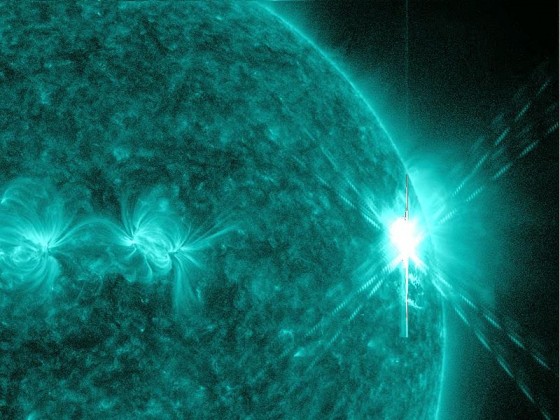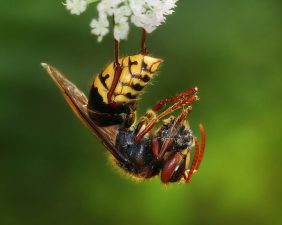Yesterday a solar flare that slammed into earth did not create any of the disruptions forecasted by scientists.
Earthlings waited with bated breath yesterday as a solar flare hurled by a coronal mass ejection on the sun slammed into our planet. NASA and the National Oceanic and Atmospheric Association (NOAA) both cautioned that this would be the worst such flare since 2006 and that it could cause “severe” disruptions to modern technology such as GPS and satellite systems and power grids. But the solar storm was far weaker than anticipated and created nary a disruption. This time.
Missed the spin
“Our forecasters really struggled with this one,” National Oceanic and Atmospheric Administration scientist Joseph Kunches told reporters. He compared trying to forecast how a solar flare will behave to predicting how a baseball will act after a pitcher tosses it towards his opponent.
“We missed the spin on the ball,” Kunches said.
Scientists misread the orientation of a magnetic field that is present within the coronal mass ejection that determines what kind of impact the solar storm will have on earth.
“It is very difficult for forecasters, literally almost impossible, as you watch the coronal mass ejection come off the sun to be able to predict the orientation of that embedded magnetic field,” according to Kunches.
Based on these forecasts, air carriers were warned to redirect their flights over polar regions. As it turned out, the solar fire only registered at G1 on a scale of five – with the higher number being more severe.
Future solar flares
NOAA and NASA researchers also expected the intensity of northern lights to increase and to be visible even at more southerly locations. But since the geomagnetic activity was considerably weaker than anticipated, the aurora borealis was only visible in far northern territories.
Since the Sun is transitioning from a solar minimum to solar maximum period, there will be a surge of geomagnetic activity and radiation in the next few years. We are protected by the earth’s magnetic field, but modern technology may not always be so lucky.
Kunches explains the worst case scenario to NPR:
Well, back during the last solar maximum, back in 2003 around Halloween, there were a series of events even stronger than the one that we’re experiencing today. And they disturbed the Earth’s magnetic field to the point where there were some interruptions in satellite operations. The airlines who need to communicate as they fly from North America to Asia over the pole rerouted their flights so they could ensure communications. Electric power grid operators felt unwanted induced currents in their systems and there were a number of other things that were technologically felt because the sun was so eruptive back then.
This time we got lucky, but future incidents should reinforce how vulnerable we are to the mysteries of the universe.
:: Borneo Post
image via wikicommons
More on the Sun:
Could Intense Solar Flares Meltdown Nuclear Reactors Everywhere?
Markus Kayser’s Solar Sinter Prints on Sand – Could Replace Concrete
A Real Live Solar City Shines in Israel





You watched that Nicholas Cage movie too, I see.
Nonetheless, the spin on the ball continued – and hit G3 between midnight at 4AM last night. The North/South component of the Earth magnetic field at Gakona and several other stations in Alaska went from a maximum of about 700nT above normal at 3:30 AM UTC to 1200nT below at 11:30 UTC. The total fluctuation was thus 1900nT. Magnetic storm strength, however, is averaged over several stations to the “Dst” measure, which is what categorizes this storm at a G3. Local phenomena can be much, much stronger.
The legendary magnetic storm in 1859 measured to 1600nT in Bombay so, locally, this one might have been worse. The 1859 storm set several fires in telegraph stations and shocked telegraph operators.
The solar storm that hit Hydro Quebec in 1989 maxed out at a Dst of -589 nT.
Now, I am waiting for the more latest news related to this Solar Flare and Geomagnetic Storm Spares Earthlings. Now lets see what will happen in the near future.